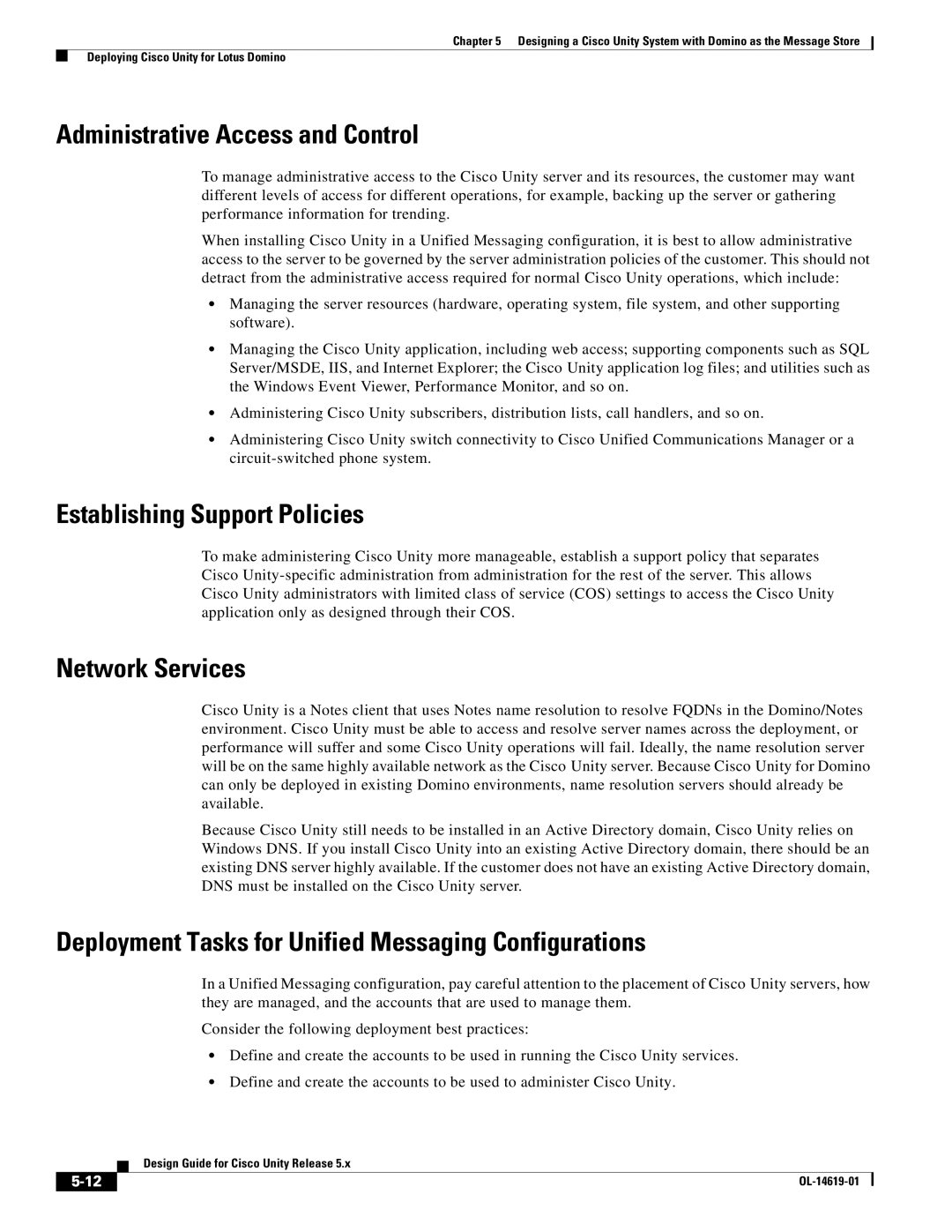
Chapter 5 Designing a Cisco Unity System with Domino as the Message Store
Deploying Cisco Unity for Lotus Domino
Administrative Access and Control
To manage administrative access to the Cisco Unity server and its resources, the customer may want different levels of access for different operations, for example, backing up the server or gathering performance information for trending.
When installing Cisco Unity in a Unified Messaging configuration, it is best to allow administrative access to the server to be governed by the server administration policies of the customer. This should not detract from the administrative access required for normal Cisco Unity operations, which include:
•Managing the server resources (hardware, operating system, file system, and other supporting software).
•Managing the Cisco Unity application, including web access; supporting components such as SQL Server/MSDE, IIS, and Internet Explorer; the Cisco Unity application log files; and utilities such as the Windows Event Viewer, Performance Monitor, and so on.
•Administering Cisco Unity subscribers, distribution lists, call handlers, and so on.
•Administering Cisco Unity switch connectivity to Cisco Unified Communications Manager or a
Establishing Support Policies
To make administering Cisco Unity more manageable, establish a support policy that separates Cisco
Network Services
Cisco Unity is a Notes client that uses Notes name resolution to resolve FQDNs in the Domino/Notes environment. Cisco Unity must be able to access and resolve server names across the deployment, or performance will suffer and some Cisco Unity operations will fail. Ideally, the name resolution server will be on the same highly available network as the Cisco Unity server. Because Cisco Unity for Domino can only be deployed in existing Domino environments, name resolution servers should already be available.
Because Cisco Unity still needs to be installed in an Active Directory domain, Cisco Unity relies on Windows DNS. If you install Cisco Unity into an existing Active Directory domain, there should be an existing DNS server highly available. If the customer does not have an existing Active Directory domain, DNS must be installed on the Cisco Unity server.
Deployment Tasks for Unified Messaging Configurations
In a Unified Messaging configuration, pay careful attention to the placement of Cisco Unity servers, how they are managed, and the accounts that are used to manage them.
Consider the following deployment best practices:
•Define and create the accounts to be used in running the Cisco Unity services.
•Define and create the accounts to be used to administer Cisco Unity.
| Design Guide for Cisco Unity Release 5.x |
|
